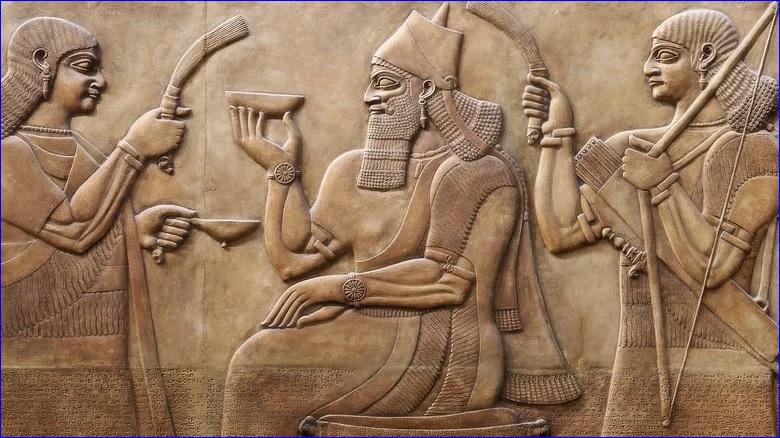


When Assyria wasn't going to war, it was often celebrating its victories with food. This tradition of sharing meals -- especially among royals -- played an important role in the politics and social customs of the empire. Kings used feasts to display their wealth and power, asserting dominance over others. Food was also frequently distributed to loyal servants, given as a tribute to nobles, or even offered to the gods. Such meals were often strikingly bold, mixing together sweet and salty ingredients such as sugar and garlic with little regard for separating flavor categories. Seasonings were abundant, too, and people had a taste for the strong stuff like fermented, sour, and toasted dishes. It was this culinary tradition that produced the earliest recorded menu.
The first ever menu we know of was carved into a stone tablet -- also known as a stele when positioned upright and adorned with inscriptions. World History Encyclopedia recounts how Ashurnasirpal II rose to power in the Assyrian Empire circa 884 B.C., putting down rebellions and fortifying his realm's expanding borders. All this conquering enriched the King's pockets, and thus, Ashurnasirpal II was able to restore a ruined city and make it his capital, complete with a brand-new grand palace.
In order to celebrate this achievement, Ashurnasirpal II threw a party of sorts. The Open Richly Annotated Cuneiform Corpus documents how the King's celebration lasted for 10 whole days. Nearly 70,000 attendees were invited, including thousands of foreign VIPs. There, they enjoyed hundreds of breads, cheeses, fruits, grains, nuts, and veggies flavored with honey and spices. They also had thousands of deer, sheep, and oxen, as well as tens of thousands of birds, eggs, and fish. Nearly 10,000 jugs of beer and the same number of wineskins were provided as refreshments. This extensive menu was etched into what is now known as the Banquet Stele, which was displayed in Ashurnasirpal II's throne room.
Notably, Ashurnasirpal II made sure that nobody would forget this menu was his. Multiple lines on the stele introduce the king and list his many accomplishments before describing any of the food. Eventually, the Assyrian Empire fell, but the Banquet Stele yet endured, serving as a relic of a time-honored culinary tradition.

or register to post a comment.